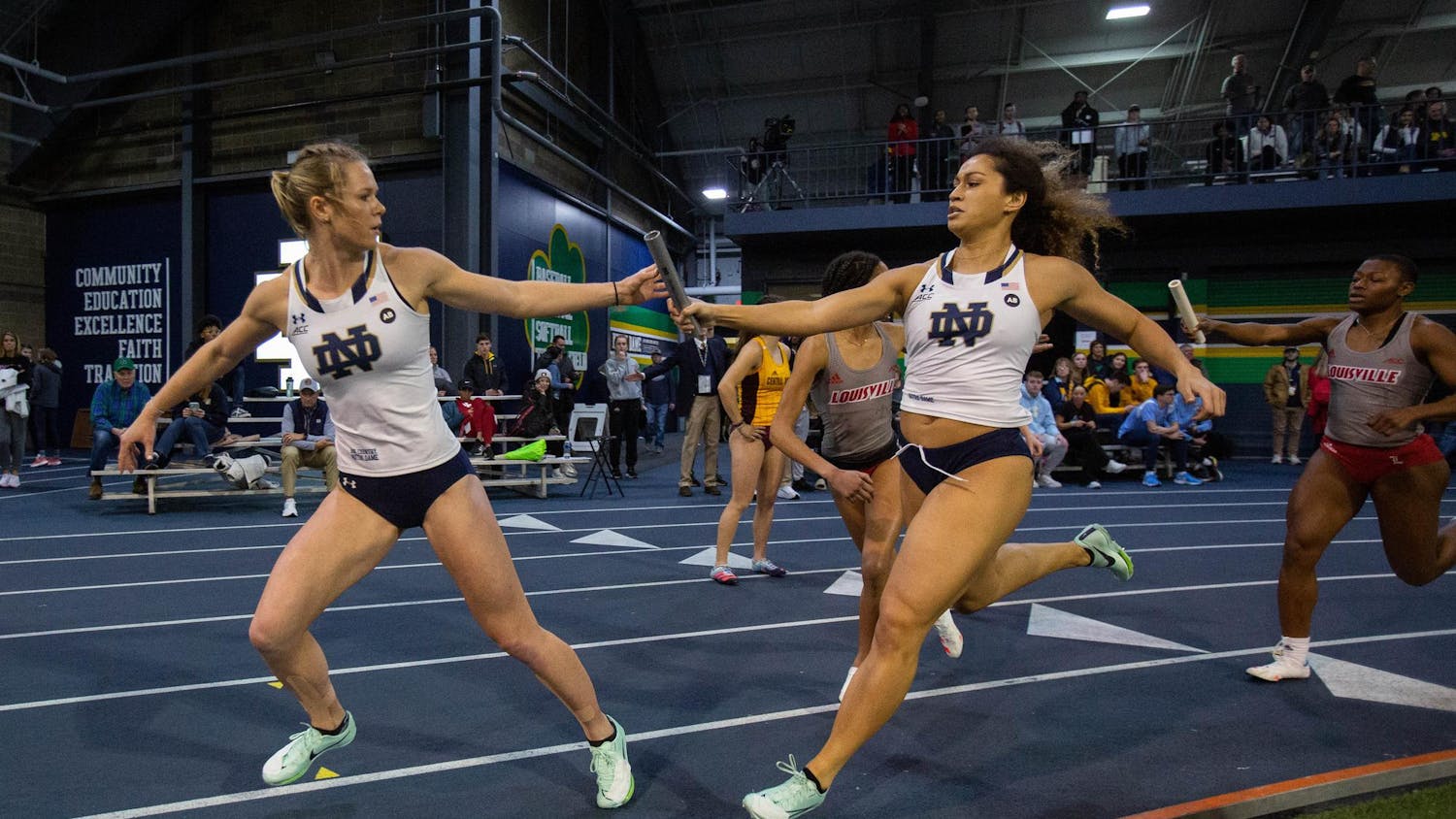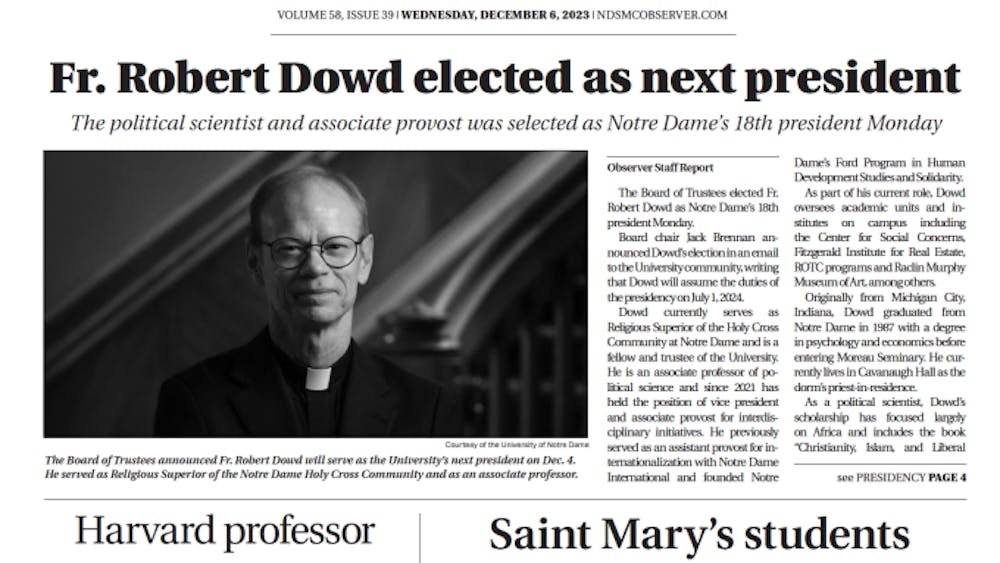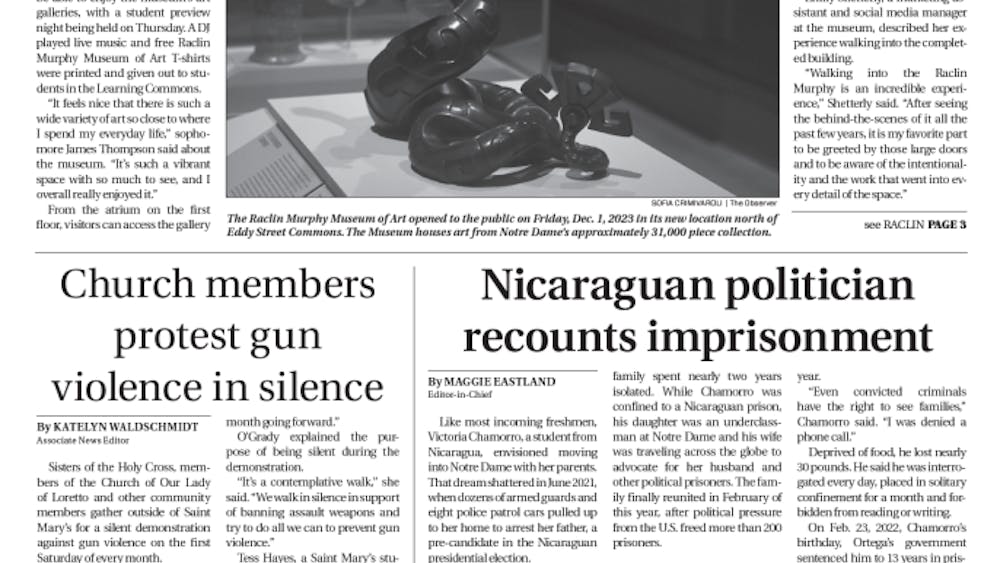Speaking to a room filled to capacity, author and contributing editor at Newsweek magazine Kenneth Woodward lectured on media coverage of Pope John XXIII and the Second Vatican Council Wednesday at Saint Mary's.
The selection of Pope John 23rd as the new pontiff in 1958 was initially perceived by the media, and then subsequently portrayed to the public, as a way to buy time for church officials, Woodward said. His age meant Pope John would head the church only for a few years, while in the meantime a successor could be anointed.
It was no wonder then, Woodward said, that when the Pope decided to convene a council to revise canon law, the magnitude of such an event was not initially recognized.
Newspapers in England, Ireland and Australia had little coverage of the three years of preparation that went into the first of four council sessions that would eventually conclude with major changes in church teachings, Woodward said.
Pope John and his council received more attention in the United States, Woodward said. The large Catholic population in the country made it more of an issue, and even Protestants were interested in what the world's most prominent Christian leader would say. Further, a rising political star added to media coverage, Woodward said.
"In 1959 a Catholic, John F. Kennedy, was running for the Democratic nomination for president of a country that had never had a Catholic president," Woodward said.
There was a sincere concern, Woodward said, that if elected, Kennedy would take orders from Rome.
As the enormity of the Council dawned on the world and the media, Vatican City was flooded with reporters from all over the world, Woodward said. As many as 3,600 journalists passed in and out of the city during the various council sessions, mixing with theologians and scholars.
"For the journalists and for the bishops there it was simply the best of times," Woodward said. "Rome is one of those cities in the world where in every conversation you are expected to talk about religion, sex, art and politics."
The meetings were held behind closed doors, and according to Woodward, journalists were constantly vying for breaks and inside information. Because there had not been such an event in the Church in a century, journalists often turned to Church "experts" to help interpret and convey what was emerging from the sessions.
"A journalist is only as good as his sources, especially at the Vatican," Woodward said. "The journalists had one eye on the Pope and the other on the developing factions within the council."
Pope John himself became sort of a celebrity figure for some media outlets like Time magazine, Woodward said. He was regularly described as a "shepherd" and guardian of Christians worldwide. His plea for dialogue during the Cuban missile crisis was widely published, winning him the image of a peace seeker.
The coverage and praise of Pope John upon his death in 1963 was profuse, Woodward said. The New York Times ran 36 columns and the New York Daily News ran 13 full pages on his life and death. Woodward cited obituary after obituary in which Pope John was called one of the most popular popes in modern times.
According to Woodward, the public should expect a similar media outpouring for the death of Pope John Paul II, which he said could happen within months.
"I know what they are going to say about John Paul II because I have already read his obituary," said Woodward.
When asked what the obituary will read, Woodward was prompt with his answer.
"How ever you deal with this Pope ... he is an evangelist," Woodward said. "I think that explains him more than anything else."









